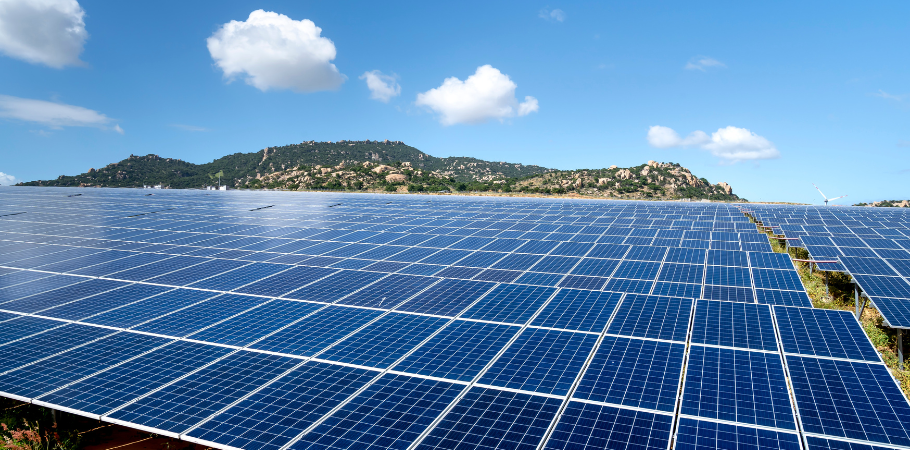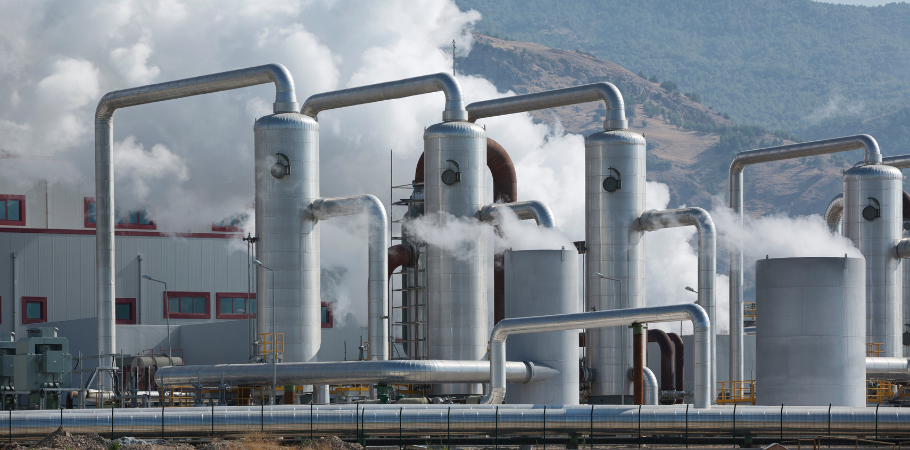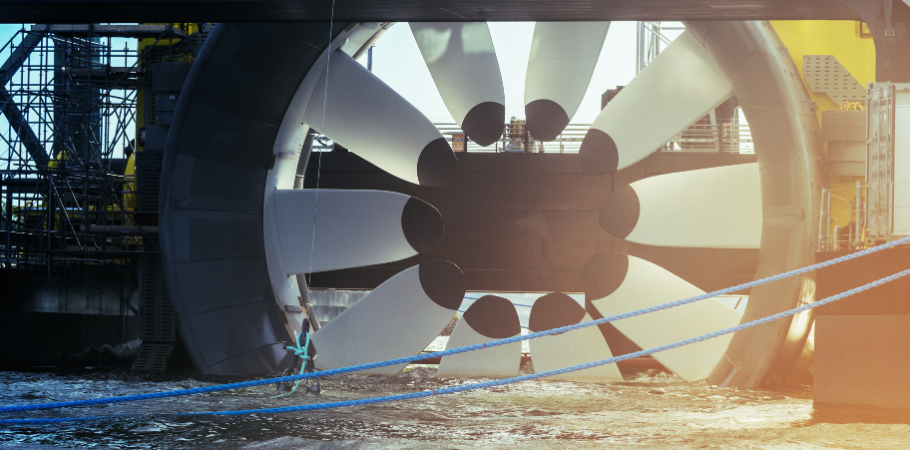
Due to the current increasing demand for energy and concerns about climate change, there is a growing interest in renewable energy.
Renewable energy is sustainable energy obtained from natural energy sources and can meet energy demand while reducing the impact on the global environment.
In this article, we will introduce the various renewable energy sources and explain their features and benefits in detail.
Types of Renewable Energy
Renewable energy comes from sources that are naturally replenished on a human timescale. Here’s a closer look at some of the most common types:
1. Solar Energy
Sunlight is an abundant source of renewable energy and can be sustainably used on the planet.
In addition, since it does not require fuel, it has a low environmental impact and low carbon dioxide emissions.
Sunlight is widely available and utilized in different parts of the world.
Moreover, solar panels can be installed on rooftops and land, and can be used on a wide range of scales, from individual homes to large-scale power plants.

The maintenance cost of solar panels is relatively low, and it requires regular cleaning and inspection, but the operating cost is low because there is no fuel cost.
Also, solar panels generally have a long lifespan and can be used for more than 20 years.
2. Wind Energy
Wind is a renewable energy source, and the movement of wind on the planet can be used to provide sustainable electricity.
It is permanent and does not require fuel, so it has a low carbon footprint.
However, wind patterns can be unpredictable, and wind turbines can have a visual impact on landscapes.

Wind power is often deployed as a large-scale wind farm or offshore wind farm, which can provide efficient power supply.
Furthermore, by adjusting the number and scale of wind turbines, it is possible to flexibly supply power according to demand.
Wind energy is variable because the power of the wind fluctuates.
However, advances in wind power technology have made it possible to predict wind patterns and adjust power supply.
3. Hydropower
Hydroelectric energy is a technology that uses the flow of water to generate electricity.
The main forms of hydroelectric power generation include hydroelectric power plants that use dams and tidal power generation that uses tidal power.
Hydropower can provide a steady power supply as long as the water flow is stable.
It can generate electricity sustainably through the circulation of water, which contributes to the stabilization of demand.
Hydropower plants using dams and large-scale hydrographic systems can provide a large amount of electricity, which can meet the electricity demand of the region and the country.
The construction of hydroelectric power plants may involve large-scale land use and ecological changes.
In addition, changes in topography and ecosystems due to the construction of dams can occur.
4. Geothermal Energy
Geothermal energy is a technology that uses the heat of the earth to generate electricity and heat. It extracts heat from underground and uses steam or hot water to generate energy.
It uses the earth’s heat source, which allows for a sustainable energy supply. Geothermal heat is not depleted, so it is sustainable for a long time.
And, geothermal energy is dependent on local geothermal resources.

Efficient power generation can be achieved in areas with abundant geothermal resources, but sufficient geothermal energy may not be available in some areas.
Geothermal power generation has low emissions of carbon dioxide and other harmful substances, but it has a certain impact on the environment, as it requires drilling and groundwater handling to harness underground heat.
5. Biomass Energy
Biomass energy is a technology that generates electricity and thermal energy by burning organic matter (plant and animal waste, crop residues, etc.).
This energy is a renewable energy source and is sustainably supplied by plant growth. In addition, by using waste and crop residues, it is possible to reduce waste disposal and make effective use of it.
Since biomass absorbs carbon dioxide during the growth process, the amount of carbon dioxide released by the use of biomass energy is almost offset by the amount reabsorbed, so it has a CO2 neutralizing effect.
It can be supplied from different sources in different regions, which can ensure the stability of energy supply.
Moreover, biomass has a higher energy density compared to other renewable energies, which allows for an efficient energy supply.
6. Solar Thermal Energy
Solar thermal energy is a technology that uses the heat radiated from the sun to generate energy.
The main forms of solar thermal energy utilization include solar water heaters and solar thermal power generation, which are thermal energy using solar collectors.
Solar heat is thermal energy from the sun that can be sustainably used on Earth.
The sun is an abundant source of energy and does not require fuel, so it has a low impact on the environment and emits less carbon dioxide.
In fact, solar thermal is widely available, and a variety of solar thermal utilization technologies can be selected according to local climatic conditions.
Solar water heaters using solar collectors are used to meet the hot water needs of homes, buildings, etc.
Additionally, solar thermal power is used in large-scale power plants and contributes to the supply of electricity.
The maintenance cost of the solar thermal utilization system is relatively low, and it requires regular maintenance and cleaning, but the operating cost is low because there is no fuel cost.
Besides, solar collectors and solar panels generally have a long lifespan and can be used for decades or more.
7. Snow and Ice Heat Utilization Energy
Snow and ice heat utilization energy is a technology that uses snow and ice to generate energy. The main forms of energy used for snow and ice heat are snow and ice heat storage.
They are renewable energy due to seasonal fluctuations. Snow and ice are used according to the climatic conditions of the region to store and utilize thermal energy.
They use snow and ice heat utilization technology in places where snow and ice are present, such as cold and alpine regions.
Snow and ice heat storage is a technology that uses snow to store thermal energy and use it when it is in demand.
This is a technology that creates ice to store thermal energy, which is then thawed and used when demanded.
The maintenance cost of the snow and ice heat utilization system is relatively low, and it requires regular cleaning and inspection.
Snow and ice storage and ice storage equipment are durable and can be used for a long time.
8. Tidal Energy
It is a type of renewable energy that harnesses the power of the tides to generate electricity.
Tidal energy is produced by the natural rise and fall of tides caused by the gravitational interaction between the Earth, the Sun, and the Moon.
When the tide comes in, it rushes into estuaries and bays, creating a strong current. This current can be captured by turbines, which convert the kinetic energy of the moving water into electricity.

Tidal energy has several advantages over other renewable energy sources. It is a very reliable source of power, as the tides are predictable.
It is also clean and does not produce any emissions. Additionally, tidal power plants do not have a large visual impact on the environment.
However, there are also some challenges associated with tidal energy.
That is, tidal power plants are expensive to build and can only be located in areas with a large tidal range. Additionally, tidal turbines can have an impact on marine life.
Advantages and Disadvantages of Renewable Energy
1. Advantages of Renewable Energy
Renewable energy offers many benefits, including environmentally friendly, sustainable energy supply, reduced reliance on fossil fuels, energy security, and the creation of new jobs.
- Environmentally friendly: Renewable energy sources produce little to no greenhouse gas emissions, helping combat climate change and air pollution.
- Sustainable: Renewable resources are naturally replenished, unlike fossil fuels which are finite.
- Reduced reliance on fossil fuels: Transitioning to renewable energy reduces dependence on imported fuels and volatile energy prices.
- Job creation: The renewable energy sector is a growing industry that creates new jobs in various fields.
- Energy security: Diversifying energy sources with renewables enhances a nation’s energy security and independence.
2. Disadvantages of Renewable Energy
Beside advantages, there are many disadvantages still available:
- Intermittency: Some renewable sources, like solar and wind, are not always available due to weather conditions.
- Initial costs: Setting up renewable energy infrastructure can be expensive upfront.
- Technological limitations: Some renewable technologies are still under development and require further advancements to become more efficient and cost-effective.
- Land-use considerations: Large-scale renewable projects like solar farms and wind turbine installations can have an impact on land use.
The Future of Renewable Energy
The future of renewable energy is bright. Advancements in technology are constantly improving the efficiency and affordability of renewable energy sources.
New materials and designs are leading to more powerful solar panels and wind turbines.
Additionally, energy storage solutions like batteries are being developed to address intermittency issues.
Government policies and public support play a crucial role in promoting renewable energy.
Implementing incentives like tax breaks and feed-in tariffs can encourage investment in renewable energy projects.
Additionally, public awareness about the benefits of renewable energy can drive further adoption.
The future potential of renewable energy is immense.
With continued research, development, and policy support, renewable energy has the potential to become the dominant source of clean and sustainable energy for our planet.
Here are some additional points to consider for your conclusion:
- Integration with existing grids: Developing efficient ways to integrate renewable energy sources with existing power grids is crucial for a smooth transition.
- Smart grids: Implementing smart grid technologies can help manage the variable nature of some renewables and optimize energy distribution.
- Community-based projects: Encouraging community-based renewable energy projects can empower local communities and foster a sense of ownership.
Conclusion
There are challenges in implementation, but solutions are often found through technological advances and policy support.
In order to expand the introduction of renewable energy in the future, it is important to support technological advances and policies.
To this end, in order to realize a sustainable society, we need to actively promote investment in and expansion of the use of renewable energy.
For the sake of the future of the planet, we encourage you to actively consider the introduction of renewable energy.
Our efforts to realize a sustainable society are important. Initiatives for renewable energy also contribute greatly to the development of regions and nations.
See more: How Global Companies Are Leading on Climate Change Solutions


